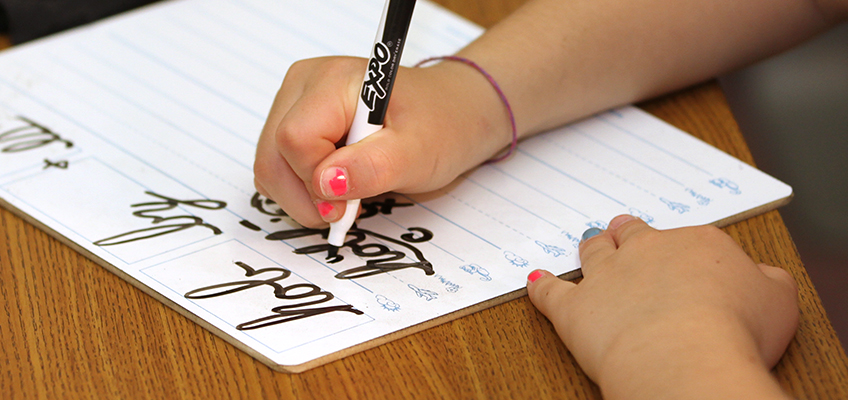Cursive handwriting instruction, a rite of childhood in public elementary schools for generations until recently, is making a comeback as more states and cities reinstate lessons in the classroom.
While still taught in a number of schools and districts, the amount of time allotted to cursive instruction has been waning over the past few decades. When it was omitted from Common Core State Standards, adopted by a majority of states in 2010, instruction time further decreased or was widely erased from lesson plans altogether as keyboarding and computer skills took priority in time-strapped schools.
Lawmakers and grandparents alike have been astonished to encounter an expanding age bracket of adolescents who cannot read or write in cursive, or sign their own names.
As a result, an increasing number of states, including Arizona, Alabama, and Louisiana, are starting to reverse the trend by requiring cursive instruction. New York City, the largest public school system in the country, is also reinstating instruction, while Ohio, Illinois, and others are reviewing the issue.
Throughout the national debate, cursive instruction has remained an important component of Fundations® Level 3 in classrooms across the country, including in the Litchfield Elementary School District in Litchfield Park, AZ, a Wilson® Implementation Network (WIN) district.
“Students are so excited when it is introduced,” said Tamara Honvlez, Director of Curriculum/ Professional Development for the century-old district near Phoenix. “I really think that’s why a lot of third-grade teachers like teaching it.”
The district’s teachers recognize the instruction’s importance in helping students develop handwriting and spelling automaticity, which, in turn, allows children to develop higher level written composition, she said.
Cursive is introduced in Fundations Level 3, when third-grade teachers establish proper conditions for student success, including posture, paper position, and pencil grip, while demonstrating letter formation, bridges, letter connections and other style elements. The component also provides instructional methods for teachers who work with students exhibiting handwriting difficulties, such as dysgraphia.
In the ongoing debate on the importance of cursive, proponents, including the National Education Association (NEA), point to research that shows the cognitive process of writing by hand improves retention and comprehension of information in a manner that does not occur when keyboarding, explained Kimberly Gillingham, Director of Professional Learning/Field Implementation at Wilson.
Findings from brain studies indicate that the fluid motion of cursive writing enhances hand-eye coordination and develops fine motor skills in younger students. These in turn promote reading, writing, and cognition skills. Additionally, the connected strokes of cursive writing make it faster and easier for children to put thoughts on paper.
In states like Arizona, laws re-establishing cursive as a standard will further enhance lessons in districts like Litchfield, that already teach it by emphasizing its importance as a required skill, Tamara said. Because the new law calls for students mastering the skill by fifth grade, Litchfield’s Level 3 Fundations Facilitators will play a key role in ensuring consistency in instruction as students advance to higher grade levels.
“It’s going to be a very important part of professional development for our teachers,” Tamara said. “I think our middle school and high school teachers will be thrilled that kids will be able to use cursive. I think they’ll see a difference with the middle school students with that automaticity.”

